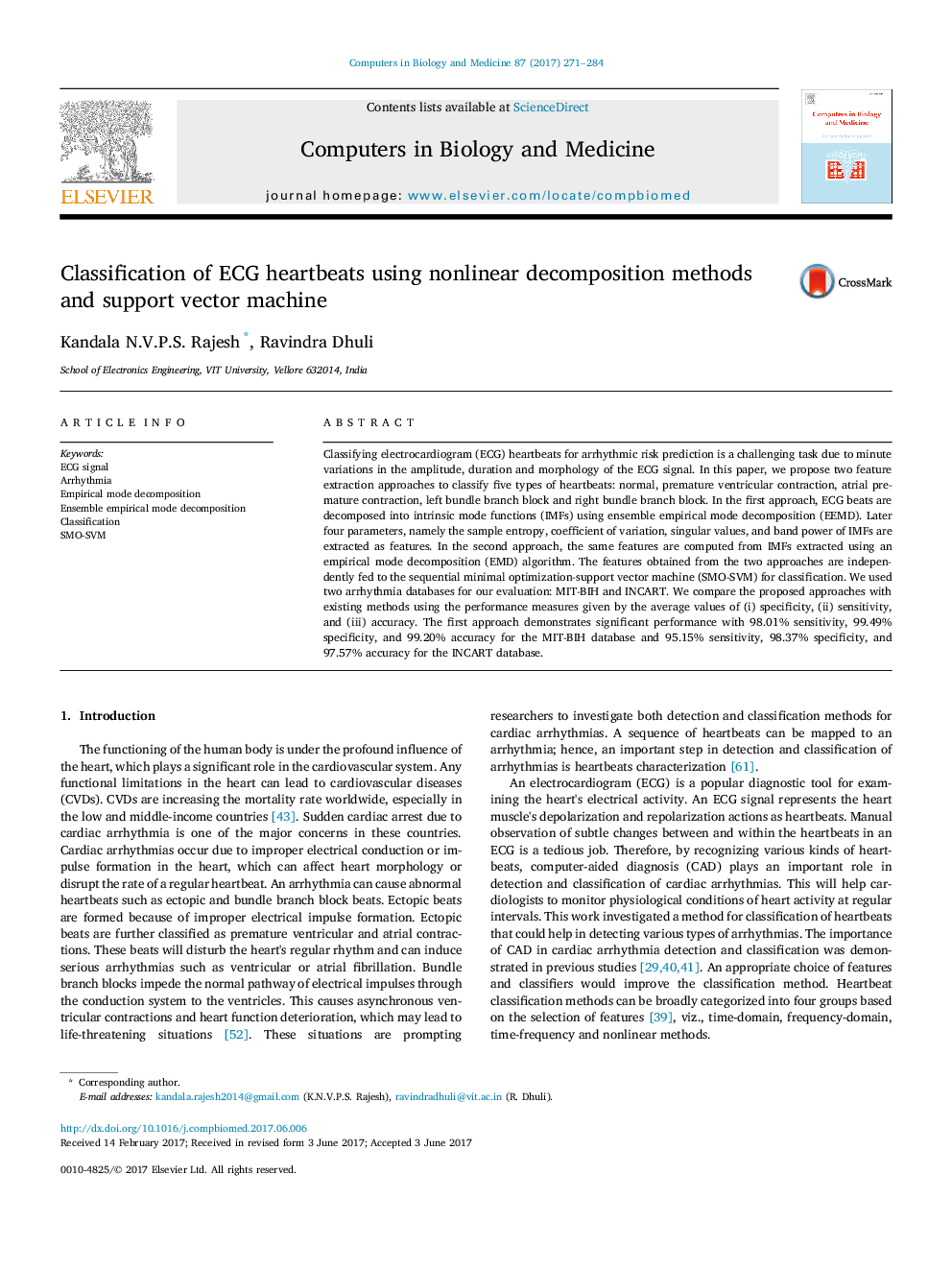| Article ID | Journal | Published Year | Pages | File Type |
|---|---|---|---|---|
| 4964819 | Computers in Biology and Medicine | 2017 | 14 Pages |
Abstract
Classifying electrocardiogram (ECG) heartbeats for arrhythmic risk prediction is a challenging task due to minute variations in the amplitude, duration and morphology of the ECG signal. In this paper, we propose two feature extraction approaches to classify five types of heartbeats: normal, premature ventricular contraction, atrial premature contraction, left bundle branch block and right bundle branch block. In the first approach, ECG beats are decomposed into intrinsic mode functions (IMFs) using ensemble empirical mode decomposition (EEMD). Later four parameters, namely the sample entropy, coefficient of variation, singular values, and band power of IMFs are extracted as features. In the second approach, the same features are computed from IMFs extracted using an empirical mode decomposition (EMD) algorithm. The features obtained from the two approaches are independently fed to the sequential minimal optimization-support vector machine (SMO-SVM) for classification. We used two arrhythmia databases for our evaluation: MIT-BIH and INCART. We compare the proposed approaches with existing methods using the performance measures given by the average values of (i) specificity, (ii) sensitivity, and (iii) accuracy. The first approach demonstrates significant performance with 98.01% sensitivity, 99.49% specificity, and 99.20% accuracy for the MIT-BIH database and 95.15% sensitivity, 98.37% specificity, and 97.57% accuracy for the INCART database.
Keywords
Related Topics
Physical Sciences and Engineering
Computer Science
Computer Science Applications
Authors
Kandala N.V.P.S. Rajesh, Ravindra Dhuli,
